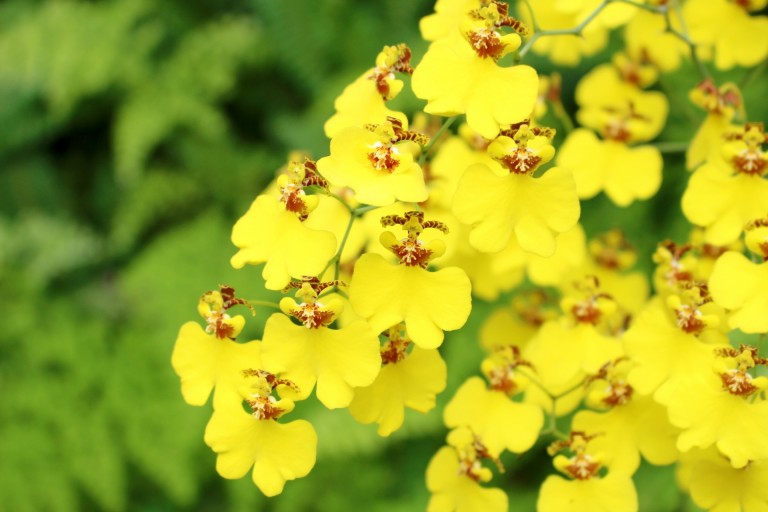公開日:
*This guide is for Japanese residents foreigner who is trying to study import ORCHID IN FLASKS and related item.
If you have any questions, please do not hesitate to contact us.
There are more than 700 genera and 15,000 species of orchids in the world, and many of them are highly valued for their uniquely shaped flowers, which are being cultivated and improved.
On the other hand, since many species are endangered, exports are controlled by the Convention on International Trade in Endangered Species of Wild Fauna and Flora (CITES).
In this section, we will explain the procedures for importing orchid seedlings in flasks.
1. The procedures for importing orchid seedlings (in flasks.)
As the name suggests, these are orchid seedlings in flasks.
Orchid seeds are scattered in the flask and germinated in a sterile condition.
The inside of the flask is kept sterile to prevent the growth of fungus.
Since the package is not exposed to the outside air, it is suitable for storage and transportation.
2. What you need to know
✍Washington Convention ( CITES )
Orchid seedlings in flasks do not require a CITES export certificate because they are clearly artificial propagation.
However, orchid flowers are subject to the Washington Convention and require a CITES export certificate for import.
Please note that the required documents are different for orchid flowers and seedlings.
✍Maintaining Sterile Conditions
Orchid seedlings in flasks are very delicate.
If there are any cracks in the flask, they will quickly grow mold and become useless.
They also need to be transported carefully and not exposed to direct sunlight.
A phytosanitary inspection is required at the time of import, but the exporting country will also require an inspection.
For transportation from the exporting country to the importing country, it is important to select a reliable carrier with a proven track record.
✍Temperature Control
Even though they are in flasks, they are still plants, so temperature control is important.
Since orchids are grown in relatively warm countries (Taiwan, Thailand, Vietnam, etc.), it is ideal to control the temperature according to the country.
Sudden temperature changes can affect the quality of the product, so it is advisable to keep the temperature as constant as possible during transportation.
Temperature control at the exporting country and temperature control at the importing country are necessary.
Therefore, select an international shipping company that has experience in plant transportation.
Narita Airport is equipped with refrigerator facilities.
❏Temperature range
Refrigerator: -20°C ・ Refrigerator: +5°C ・ Medium temperature chamber: +15°C~19°C ・ Constant temperature chamber: +1°C~20°C, etc.
※Plants are generally stored in medium or constant temperature refrigerators.
※In general, plants should be stored in medium temperature or constant temperature storage.
It is necessary to take into account the temperature at the time of arrival and make arrangements for storing in a refrigerator upon arrival.
Select a customs broker that is open 24/7, in case you arrive on a holiday.
3. Confirmation of required documents
The documents required for customs clearance are as follows
- INVOICE/PACKING LIST : Prepared by the exporter
- PHYTOSANITARY CERTIFICATE : Issued by the exporter
- AWB(Air Waybill) : Issued by the local forwarder at origin
4.Import Customs Clearance “Phytosanitary Application and Inspection”
Since orchid seedlings are plants, they need to be applied for and inspected by the Plant Quarantine Service.
✍Necessary documents for Application for Plant Quarantine
- Invoice or Packing List : Prepared by the exporter
- PHYTOSANITARY CERTIFICATE : Prepared by the exporter
- AWB (Air Waybill) : Issued by local forwarder
✍Flow of Application and Inspection
Prepare an application form for plant quarantine based on the required documents and apply to the plant quarantine station.
After confirmation of cargo delivery is obtained, the cargo is subjected to physical inspection at the inspection site of the Plant Quarantine Station.
During the inspection, the plant protection officer of the plant quarantine station visually inspects the cargo for pests.
※If there is no soil in the flask, the flask is not opened, and the flask is sterile.
If no pests are found in the flask, a certificate of acceptance for plant inspection will be issued.
Attention!
Inspection must be done at the port of arrival, so please note that bonded transportation is not possible.
For example, if you are transporting your seedlings to Fukuoka Airport via Narita Airport, your seedlings will be stopped at Narita Airport.
If the seedlings pass the inspection at Narita Airport, they can be transported to Fukuoka Airport again.
5. Import customs clearance “customs declaration”
✍HS Code ( Harmonized CommodityTariff Code )
Orchid Seedlings : 0602.90-090
✍Customs Duty
FREE.
✍Documents Required for Import Declaration
- Invoice and Packing List : Prepared by exporter
- AWB(Air Waybill) : Issued by local forwarder
Declare to the customs with the “Certificate of Acceptance for Plant Inspection”.
After the examination is completed and import duties and consumption tax are paid, the import permit is granted and the cargo can be picked up.
6. Extra
✍How to remove seedlings
Be careful when taking out seedlings from the flask.
If the roots are intertwined with each other in the medium and it is difficult to take out the seedlings with long tweezers, etc., it is strictly forbidden to try to pull the leaves out with tweezers, etc.
The leaves will always break off.
It is necessary to pinch the base of the plant to remove the seedlings, and if it is too hard to do so, break the container to remove the seedlings.
If the seedlings are too hard to remove, split the container open and remove them. After removing the seedlings, rinse the medium off in the shower, focusing on the roots.
✍Washington Convention
Seedlings in flasks are not subject to the Washington Convention, but orchid flowers are.
As a trading company dealing with orchids, you should know this to avoid violating the treaty.



